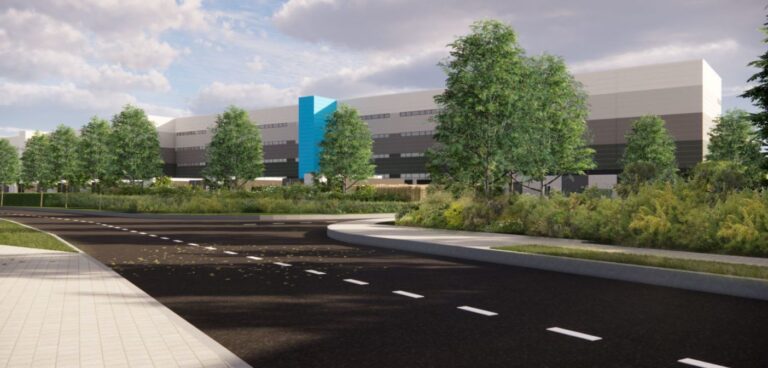Reports suggest online retailer and 3PL Amazon is set to sublet large amounts of warehouse space in the UK that it has secured but has yet to occupy following its worst quarterly loss on record. However, only one property in the UK has as yet been linked to that decision – a delivery station in Bracknell which was undergoing fit out last year.
As Amazon’s delivery stations in the UK typically measure 25,000-90,000ft², this at present does not seem a large amount of space compared to the amount its currently operates directly or indirectly in the UK – believed to be in excess of 90 million ft² across approximately 56 sites.
Following Amazon’s first profit warning in May last year when vacancy rates for warehouse space across the UK were at record lows of 2.8%, Kevin Mofid, Head of Logistics and Industrial Research at Savills, noted that even if Amazon were to vacate a tenth of its stock, the vacancy rate would only move out 0.8% to 3.6%. It had been suggested that Amazon was looking to divest itself of some 10 million ft² in the US where it is thought to have increased its floorspace significantly seeking market share during the pandemic.
While vacancy rates have increased due to new stock coming to the market, they are still only expected to increase to 5% this year which is a long way off the 24% vacancy seen in the aftermath of the Great Financial Crisis.
The supply of industrial and logistics space in the UK is still extremely tight with rent levels increasing – albeit at a much slower rate. It is a widely held belief that rent levels will only fall should vacancy rates tip 12%.
In January this year Amazon announced that it would close three fulfilment centres and seven delivery stations totalling around 1.4 million ft², with the loss of some 1,200 jobs in the UK, but at the same time open two new mega fulfilment centres and a further two delivery stations totalling in excess of four million ft² creating 2,500 jobs. Amazon said it was “always evaluating” its network to “make sure it fits” its business requirements. “As part of that effort, we may close older sites, enhance existing facilities, or open new sites” a spokesperson said.
In its latest financial report Amazon said: “Macroeconomic factors, including inflation, increased interest rates, significant capital market volatility, the prolonged COVID-19 pandemic, global supply chain constraints, and global economic and geopolitical developments, have direct and indirect impacts on our results of operations that are difficult to isolate and quantify.
“These factors contributed to increases in our operating costs during 2022, particularly across our North America and International segments, primarily due to a return to more normal, seasonal demand volumes in relation to our fulfilment network fixed costs, increased transportation and utility costs, and increased wage rates.
“In addition, rising fuel, utility, and food costs, rising interest rates, and recessionary fears may impact customer demand and our ability to forecast consumer spending patterns. We expect some or all of these factors to continue to impact our operations into Q1 2023.”
Amazon does not comment on rumour and speculation.
As yet there is very little concrete data suggesting a dramatic fall in occupier demand, although it has been noted anecdotally that some lease agreements and requirements may have been paused or are being delayed.







